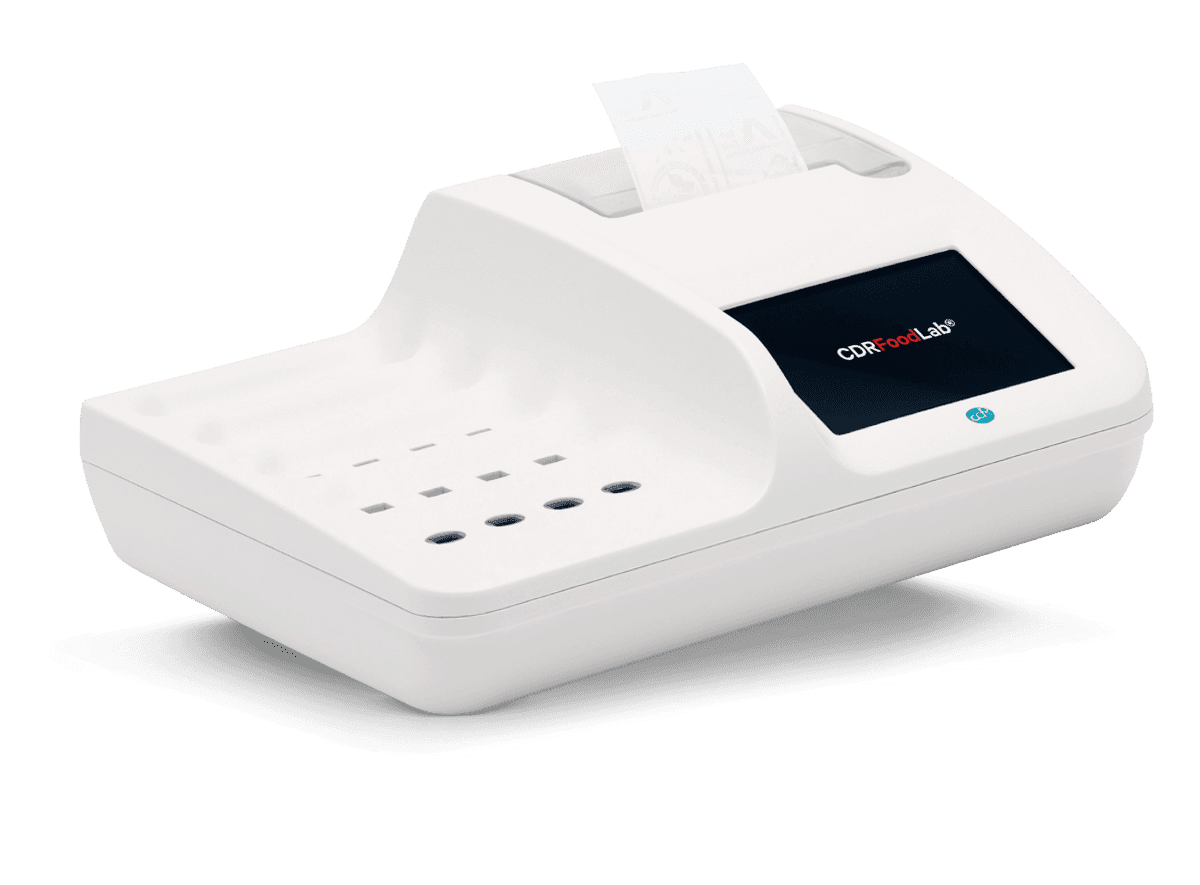Analysis of L-Lactic acid in milk and dairy products
Lactic acid is produced by the fermentation of lactose mainly through microbial activity. Its concentration depends on the total bacterial count and can be a useful indicator of the good state of preservation. In addition, the heat treatment at high temperatures, UHT, reduces the microbial load but does not alter the concentration of lactic acid, which thus becomes an indicator of the "history" of the product. The test can also be run on derivatives in powder (whey, milk, additives) after reconstitution in water.
Method
Test principle
L-Lactic acid is oxidized to pyruvate by an enzymatic reaction that produces H2O2. H2O2, in the presence of peroxidase and a phenolic derivate, forms a colored complex whose intensity was read at 545nm and is directly proportional to the concentration of L-lactic acid in the sample.
...
Calibration curve
Comparative tests on samples of whole milk between the reference method and the CDR FoodLab® method, performed in a leading company in production of milk, confirmed a very good alignment between the two systems.
...
Reagent test kits
Milk and Cream
Ricotta, Mozzarella and Yogurt
Measuring range
| Analyses | Measuring range | Resolution | Repeatability |
|---|
Analyzers for quality control of milk and dairy products
CDR FoodLab®
- Complete analysis panel, supplied already configured
- Up to 16 determinations simultaneously
- Possibility of carrying out analyses of the same sample
- Integrated printer
- Full connections (LAN - USB - Bluetooth barcode/QR code reader)
CDR FoodLab® Jr
- Partial analysis panel, supplied configured with 3 analyses of your choice, implementable
- Up to 3 determinations simultaneously
- Wireless connection to external printer
- USB connections
